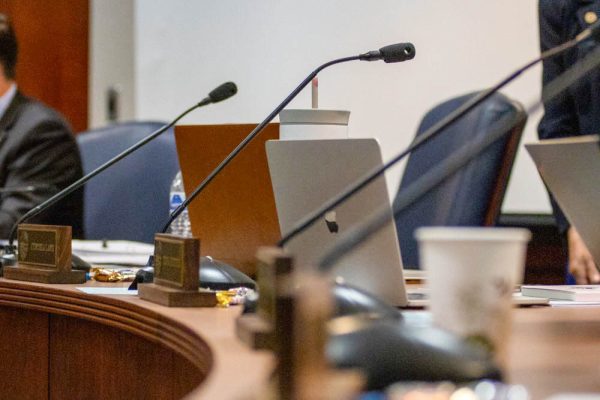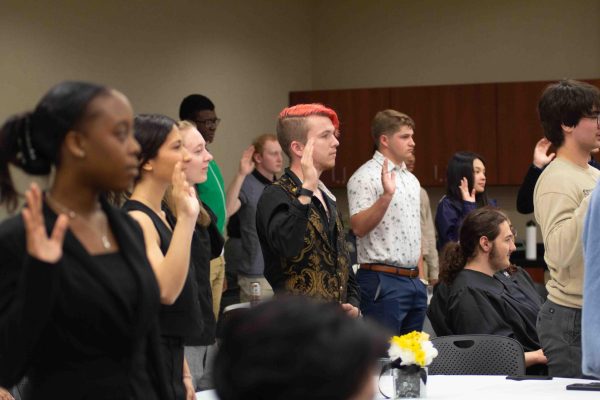‘Whatever Happened to ‘Black Capitalism’: keynote speaker examines the past to find solutions for the present
On Thursday, Feb. 18, the Office of Diversity and Inclusion held a virtual stream for Black history month, with keynote speaker Dr. Robert E Weems Jr. who discussed the history of Black capitalism and how we can examine the past to see what is needed in today’s society to improve Black entrepreneurship.
“Now, historians, we focus on what was,” Weems said. “But there are some historical phenomena that are so intriguing that it is very interesting to at least briefly ponder the ‘what if’.”
In 1966, Abraham Venable, a specialist in the Commerce Department’s Community Relations Unit created his “Athlete Project” in order to enhance Black entrepreneurship. Through the project, 136 Black players in the NFL deposited money in an investment fund in order to create role models for black youth. This program had success in obtaining three enterprises and putting Black athletes in office spaces in eight cities.
This record of success was put on hold in 1967, when 176 racial disturbances were reported across the United States. Howard J. Samuels, as Administrator of the SBA, formulated and implemented Project OWN in 1968; it aimed to generate 20,000 loans for prospective Black businessmen.
“In looking at project OWN, to me this represents an intriguing historical ‘what-if’… Now, the ‘what if’ in terms of project OWN, what if Hubert Humphrey had won the presidential election of 1968? What if, in this capacity, Howard J. Samuels as the administrator of SBA had been able to implement project OWN as he outlined to President Lyndon Johnson? How might that have changed subsequent history?,” Weems said.
In the 1986 presidential election, all major candidates spoke to the importance of Black business development. Richard Nixon is credited for introducing the term “Black Capitalism” into the national vocabulary, and in 1969 held his promises and created the Office of Minority Business Enterprise.
“Now, in looking at the Office of Minority Business Enterprise, it remains debatable in terms of just how effective this government agency was, in terms of promoting African American entrepreneurship,” Weems said. “Now, what isn’t debatable is that the creation of the Office of Minority Business Enterprise generated significant public discussion related to the topic of Black business developments.”
Weems said that in order to examine how the issue of Black business development rose and fell in the discourse of the public, The Reader’s Guide to Periodical Literature gives us a good understanding of what was happening before Google was created. This public discourse is directly influenced by what issues in society presidents choose to focus on.
“When we talk about presidents of the United States, among other things these individuals have been referred to as possessing a ‘bully pulpit’, which essentially said that any issue they give attention to necessarily generates public interest,” Weems said.
Through 1969 and 1970, there were over 30 listings for Black business development in multiple similarly-named categories.
“This dramatic increase in published articles related to black business development clearly appears to have been directly linked to the creation of the Office of Minority Business Enterprise and again, president Nixon’s public comments related to the support of Black business development,” Weems said.
In the mid 1970s, there was a dramatic decrease in listings, due to the subsiding of Black militancy, which had motivated the U.S government to calm unrest. In 1979 and 1985, articles began being indexed in Black Enterprise and Jet.
“When we look at this data from the mid 1980’s, related to African American business development, it clearly shows that interest in Black business development became almost exclusively confined to the African American community. In fact, by the mid 1980’s the notion of the importance of Black business development had really become a peripheral issue in terms of national priority,” Weems said.
In today’s world, Weems says that many Black communities are still economically underdeveloped, and this is why it is important to examine actions of the past to improve Black Capitalism in order to see if they would still be relevant in the 21st century.
“First of all, it looks like substantive public discourse related to Black business development with participants from all sectors of American society seems to have disappeared just like the Afro hair style,” Weems said.
Weems said that the actions of Reverend Sullivan, pastor of Philadelphia’s Mount Zion Baptist Church, are worth examining. He created the “10-36 plan”, in which members of the church donated into a cooperative pool once a month, and garnered 6,000 members by the early 1970’s.
This resulted in a variety of important economic development endeavors, including the first Black-owned shopping center, Progress Aerospace Enterprises, and Opportunities Industrialization Center which provided job training.
“In the challenging times that we currently find ourselves in, there is no need to reinvent the wheel in terms of African American economic development. In fact, much of what needs to be done today has been done in the past. And all that is needed is the vision of persons such as Reverend Sullivan, along with the resolve of ordinary citizens to support such a vision,” Weems said.

Julia Nightengale was a third-year reporter for The Sunflower, previously working as a Copy Editor and News Editor. Nightengale is a graduate student working...













